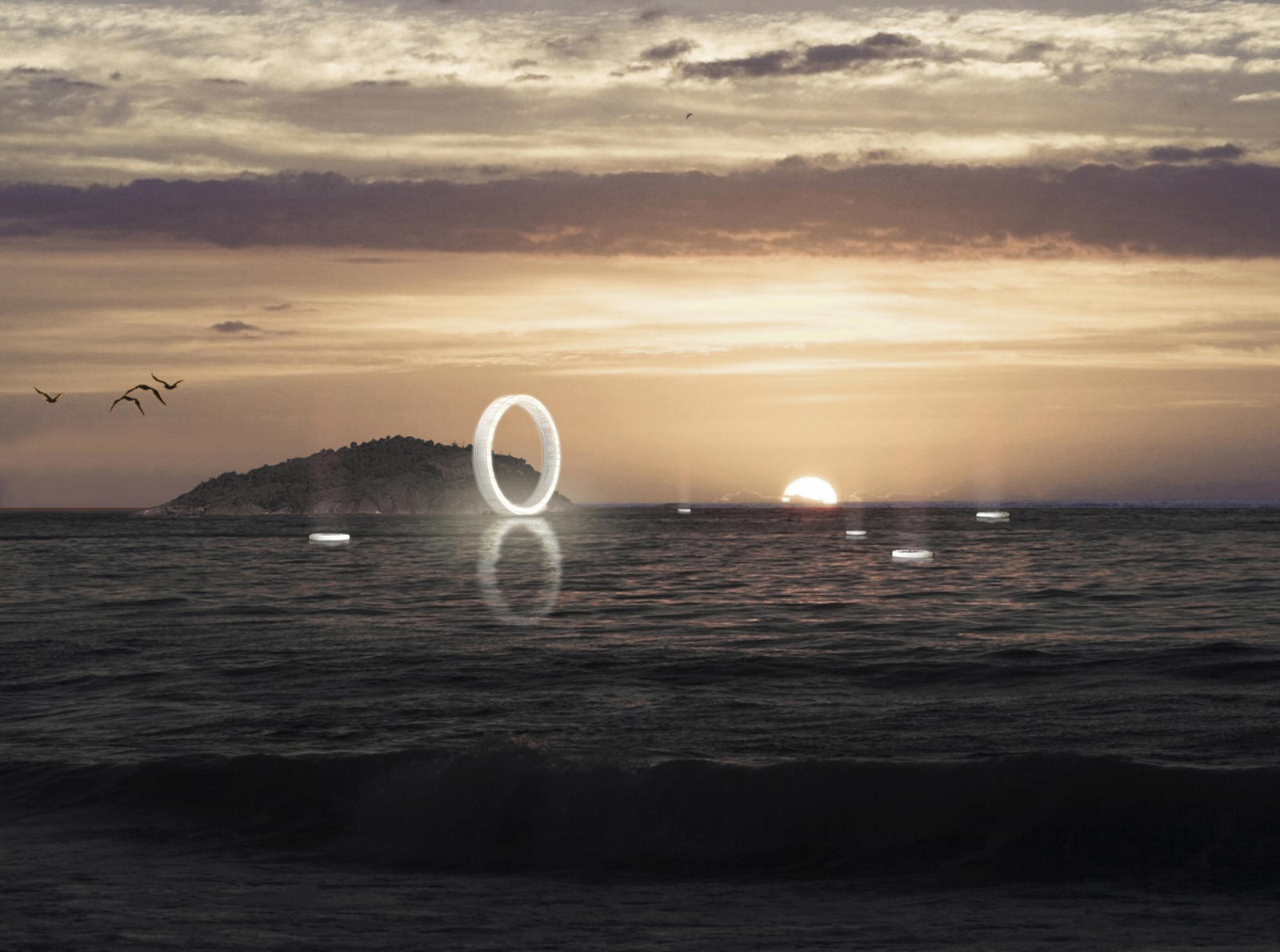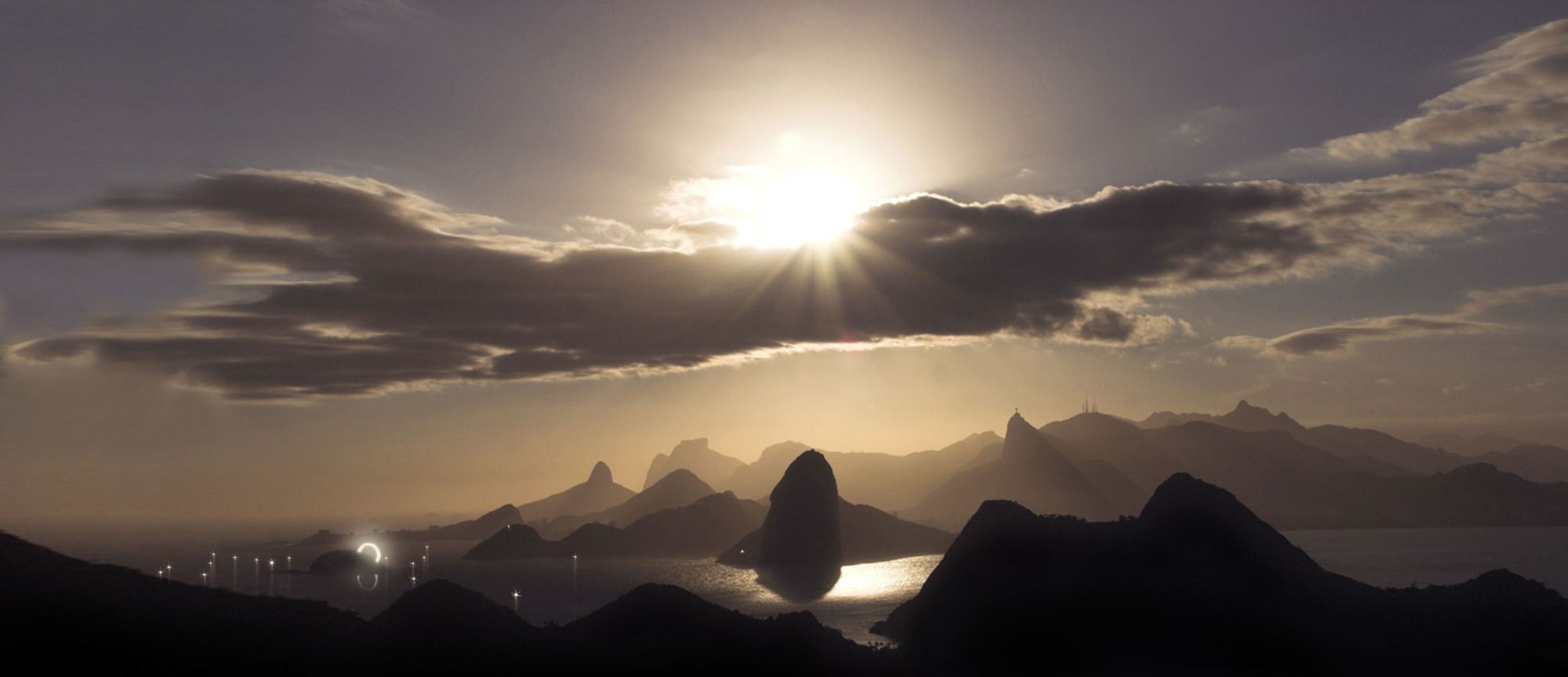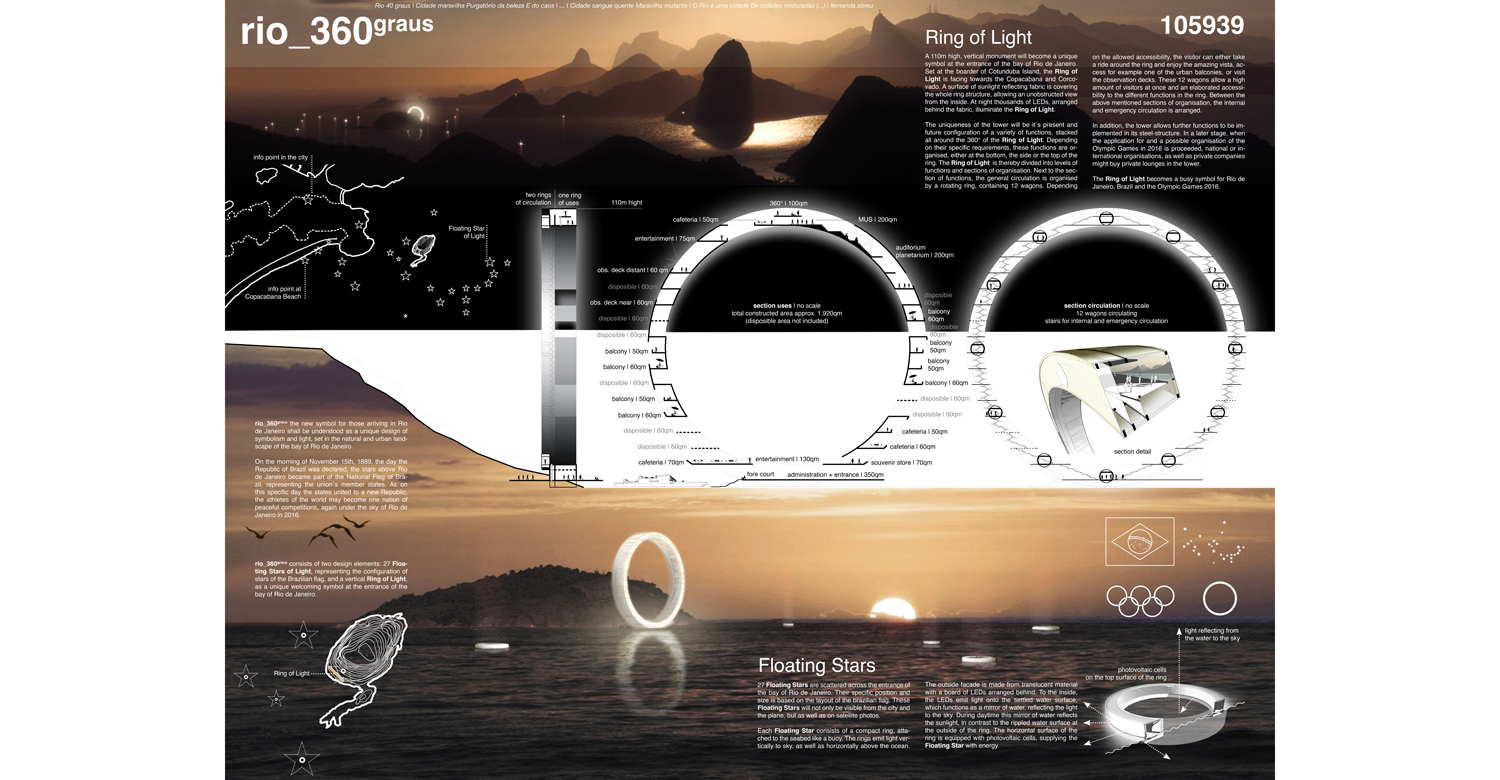rio_360graus

Competition: Vertical Monument for the Olympic Games in Rio de Janeiro > 1st. Prize
in cooperation with teamwerk-architekten
rio_360graus the new symbol for those arriving in Rio de Janeiro shall be understood as a unique design of symbolism and light, set in the natural and urban landscape of the bay of Rio de Janeiro.
On the morning of November 15th, 1889, the day the Republic of Brazil was declared, the stars above Rio de Janeiro became part of the National Flag of Brazil, representing the union´s member states. As on this specific day the states united to a new Republic, the athletes of the world may become one nation of peaceful competitions, again under the sky of Rio de Janeiro in 2016.
rio_360graus consists of two design elements: 27 Floating Stars of Light, representing the configuration of stars of the Brazilian flag, and a vertical Ring of Light, as a unique welcoming symbol at the entrance of the bay of Rio de Janeiro.
RING OF LIGHT
A 110m high, vertical monument will become a unique symbol at the entrance of the bay of Rio de Janeiro. Set at the boarder of Cotunduba Island, the Ring of Light is facing towards the Copacabana and Corcovado. A surface of sunlight reflecting fabric is covering the whole ring structure, allowing an unobstructed view from the inside. At night thousands of LEDs, arranged behind the fabric, illuminate the Ring of Light.
The uniqueness of the tower will be it´s present and future configuration of a variety of functions, stacked all around the 360° of the Ring of Light. Depending on their specific requirements, these functions are organised, either at the bottom, the side or the top of the ring. The Ring of Lightis thereby divided into levels of functions and sections of organisation. Next to the section of functions, the general circulation is organised by a rotating ring, containing 12 wagons. Depending on the allowed accessibility, the visitor can either take a ride around the ring and enjoy the amazing vista, access for example one of the urban balconies, or visit the observation decks. These 12 wagons allow a high amount of visitors at once and an elaborated accessibility to the different functions in the ring. Between the above mentioned sections of organisation, the internal and emergency circulation is arranged.
In addition, the tower allows further functions to be implemented in its steel-structure. In a later stage, when the application for and a possible organisation of the Olympic Games in 2016 is proceeded, national or international organisations, as well as private companies might buy private lounges in the tower.
The Ring of Light becomes a busy symbol for Rio de Janeiro, Brazil and the Olympic Games 2016.
FLOATING STARS
27 Floating Stars are scattered across the entrance of the bay of Rio de Janeiro. Their specific position and size is based on the layout of the brazilian flag. These Floating Stars will not only be visible from the city and the plane, but as well as on satellite photos.
Each Floating Star consists of a compact ring, attached to the seabed like a buoy. The rings emit light vertically to sky, as well as horizontally above the ocean. The outside facade is made from translucent material with a board of LEDs arranged behind. To the inside, the LEDs emit light onto the settled water surface, which functions as a mirror of water, reflecting the light to the sky. During daytime this mirror of water reflects the sunlight, in contrast to the rippled water surface at the outside of the ring. The horizontal surface of the ring is equipped with photovoltaic cells, supplying the Floating Star with energy.







